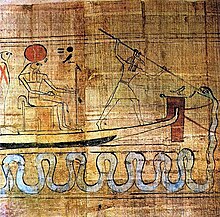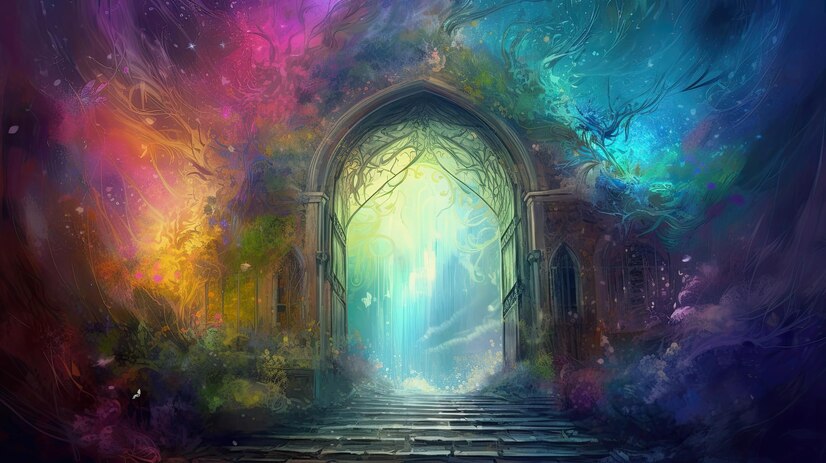
Dear forum adventurers,Unknown - Octave Uzanne, Le Livre, Paris, A. Quantin, 1885.
Front page of Le Misanthrope (1666) by Molière (1622-1673)
for some reason this evening, I was thinking about Hermits (eremites, anchorites, recluses, etc.).
The AI thread (of Spiritwind?) really does start to delve into psychology, and of course, techno-revolution is more about change itself than the specific vehicles of change (to me); about keeping the organics (us humans! haha) off-balance and always in "catch-up" mode rather than "exemplary mode", if that makes sense. How can we "shine/pop/bling" if we are obsolete?
What I'm saying in short is that the technological revolution has robbed many people of their individualism, by overexposure, it cheapens their pure will to succeed and thrive; on the other hand it also leaves people without a place to hide, in the event that society overwhelms them, (because of phones and the internet, etc).
Those who enjoy social life and its challenges can find themselves over exposed (as friends on larger sites find themselves exposed), and those who just want to be left alone have a harder time finding that quiet place without feeling danger (not sure if anyone read BR's thread about mountain hiking and end of life premonitions. Ouch).
Also, given the lack of time in which to enjoy silence, and the lack of silence itself in this technologically bent world of ours,
there is less importance given to the wisdom/advice/presence of the withdrawn Saint. Fewer and fewer people know to seek him (or her) out.
I guess some of you would call this the Sovereign Self. Right? The model hermit. What dreams may come when every day is an empty slate,
free from materialism and social pressures.
Does the modern world leave any space for the occurrence of this person?
____
https://en.wikipedia.org/wiki/Hikikomori
https://en.wikipedia.org/wiki/Misanthropy
https://en.wikipedia.org/wiki/Recluse
https://en.wikipedia.org/wiki/Hermit
https://en.wikipedia.org/wiki/Hermit#An ... nchoresses
https://en.wikipedia.org/wiki/The_Hermi ... ot_card%29
_____
Discouragement in Japan:
_____Hikikomori (ひきこもり or 引き籠もり Hikikomori?, literally "pulling inward, being confined", i.e., "acute social withdrawal") is a Japanese term to refer to the phenomenon of reclusive adolescents or adults who withdraw from social life, often seeking extreme degrees of isolation and confinement. The term hikikomori refers to both the sociological phenomenon in general as well as to people belonging to this societal group. Hikikomori have been described as recluses, loners, or "modern-day hermits."[1]
The Japanese Ministry of Health, Labour and Welfare defines hikikomori as people who refuse to leave their house and, thus, isolate themselves from society in their homes for a period exceeding six months.[2] The psychiatrist Tamaki Saitō defines hikikomori as "A state that has become a problem by the late twenties, that involves cooping oneself up in one’s own home and not participating in society for six months or longer, but that does not seem to have another psychological problem as its principal source."[3] More recently, researchers have suggested six specific criteria required to "diagnose" hikikomori: 1) spending most of the day and nearly every day confined to home, 2) marked and persistent avoidance of social situations, 3) symptoms interfering significantly with the person’s normal routine, occupational (or academic) functioning, or social activities or relationships, 4) perceiving the withdrawal as ego-syntonic, 5) duration at least six months, and 6) no other mental disorder that accounts for the social withdrawal and avoidance.[4]
While the degree of the phenomenon varies on an individual basis, in the most extreme cases, some people remain in isolation for years or even decades. Often hikikomori start out as school refusals, or futōkō (不登校?) in Japanese (an older term is tōkōkyohi (登校拒否?).
Disagreement between Jewish and Catholic authorities on hermits is a known thing, although there are examples of Jewish rabbis who practiced seclusion:
_____Rabbi Nachman of Bratzlav, the Baal Shem Tov's great-grandson, also spent much time in seclusion and instructed his disciples to set aside at least one hour a day for secluded contemplation and prayer. Some followers of Rabbi Nachman devoted themselves to seclusion, such as Rabbi Shmuel of Dashev and two generations later, Rabbi Abraham Chazan.

______The Waite version of the card shows an old man carrying a staff in one hand and a lit lantern containing a six-pointed star in the other. In the background is a wasteland. Just beyond the wasteland is a mountain range.
"Desert Theology" (Sorry this is so Christian but it gives a good example of what the science fiction writer Frank Herbert might have said about his fictional Fremen and Zensunni Wanderers):
https://en.wikipedia.org/wiki/Catholic_ ... irituality
Desert spirituality is a way of seeking God that is characterized by the "desert theology" of the Old Testament that is at the very heart of the Judeo-Christian tradition, namely God keeping his People wandering for 40 years in the desert,[1] and also throughout the subsequent centuries repeatedly calling them into the desert, as a testing ground where they may experience a change of heart and, by proving themselves obedient to his ordering of human living, accept him, their Creator, again as their Lord.
In New Testament times it is likewise for the reason of proving his obedience that Jesus of Nazareth underwent testing in the desert (cf. Matthew 4:1-11 = Mark 1:12-13 = Luke 4:1-13).
The Christian eremitic vocation has the same purpose, as the name hermit applied to those that embrace it indicates.
Among those most widely known for living a desert spirituality during the early Christian centuries is St Anthony of Egypt (251-356). He lived as a hermit for ten years, practiced asceticism for his whole life, and grew his own food for sustenance.
From the life of someone alone being dedicated to seeking God in the desert, which is the earliest form of Christian monasticism, the monastic life in community has emerged, although the eremitic vocation continues as a distinct way of seeking God even today.
In practical terms this spiritual quest is pursued through prayer in solitude and asceticism.
Some adherents of desert spirituality – whether as eremitic or cenobitic monastics, or as Christian faithful outside the religious life – practise centering prayer. Though seriously disputed as anachronistic and of modern, Eastern origin, this practice is in truth prominent in Catholic practice (at least) as early as the 13th century, as evinced by works such as The Cloud of Unknowing - written anonymously in Middle English by a Catholic monastic. This is meditation on a single, sacred word that is meant to draw the believer closer to God by withdrawing compulsive infatuation with particular sensory objects and conceptual constructions
------
Desert Gods
I've bashed Set worshipers before, for not being overt,
but in actuality it seems to me that Set represents Evolution in the harshness of the wild,
the order within chaos that the wilderness itself puts into motion.
No wonder this deity is seen as the guide of the ship of Osiris.
In this, Set can be said to resemble Hermes,
the guide of souls.


Set /sɛt/ or Seth (/sɛθ/; also spelled Setesh, Sutekh,[1] Setekh, or Suty) is the god of the desert, storms, chaos, evil, strength and foreigners in ancient Egyptian religion.[2] In Ancient Greek, the god's name is given as Sēth (Σήθ). Set is not, however, a god to be ignored or avoided; he has a positive role where he is employed by Ra on his solar boat to repel the serpent of Chaos Apep.[2] Set had a vital role as a reconciled combatant.[2] He was lord of the red (desert) land where he was the balance to Horus' role as lord of the black (soil) land.[2]
In Egyptian mythology, Set is portrayed as the usurper who killed and mutilated his own brother Osiris. Osiris' wife Isis reassembled Osiris' corpse and resurrected him long enough to conceive his son and heir Horus. Horus sought revenge upon Set, and the myths describe their conflicts. The death of Osiris and the battle between Horus and Set is a popular theme in Egyptian mythology.
-----
"Survivor" or Relic?
Although old hat in 2015, the TV series "Survivor" taps deeply into modern humanity's unexpressed need to be alone,
to be tested by raw nature, to go "into the desert for 40 days" and "survive"... ooo...
The social individuals who participated in this game were usually pretty popular,
but the ones who were successful, were not necessarily social...
I'm not very good at this kind of writing, but it's interesting to me how hard it is to survive in the modern world without bowing to it.




